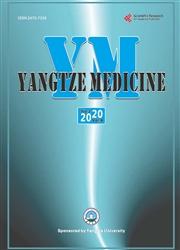Treatment of Hypertension: A Review
引用次数: 15
Abstract
Hypertension is the most common modifiable risk factor for death and disability including stroke, accelerated coronary and systemic atherosclerosis, heart failure, chronic kidney disease, lowering the BP with antihypertensive drugs, and reducing the target organ damage and prevalence of the occurrence of cardiovascular disease. According to the 2017 American college of cardiology (ACC)/American heart association (AHA) hypertension guidelines hypertension is defined as systolic BP is ≥130 mmHg or diastolic BP is ≥80 mmHg. BP should be lower than 130/80 mmHg in patient with CHD, CHF, after renal transplantation, diabetes mellitus and stroke. Recommended lifestyle modification included restriction of dietary sodium intake, weight loss if patient is overweight, regular exercise, moderate alcohol intake and increase consumption of potassium rich foods. The initial antihypertensive agent should be generally selected from one of the following four classes—thiazide diuretics, ACE inhibitors, ARBs, and calcium channel blockers, shown to reduce cardiovascular events. There are two interventional approaches—Renal Denervation and Baroreflex activation therapy, which are used in clinical practice for treatment of several treatment resistant hypertensions. Other interventional approaches are carotid body ablation and AVF placement but none of them prevent cardiovascular disease outcome or death in hypertensive patient.高血压的治疗:综述
高血压是最常见的可改变的死亡和残疾危险因素,包括中风、加速冠状动脉和全身动脉粥样硬化、心力衰竭、慢性肾脏疾病、降压药物降低血压、减少靶器官损害和心血管疾病发生的患病率。根据2017年美国心脏病学会(ACC)/美国心脏协会(AHA)高血压指南,高血压的定义是收缩压≥130 mmHg或舒张压≥80 mmHg。冠心病、心力衰竭、肾移植术后、糖尿病、脑卒中患者血压应低于130/80 mmHg。建议的生活方式改变包括限制饮食中钠的摄入量,如果患者超重,减轻体重,定期锻炼,适量饮酒和增加富含钾的食物的摄入。最初的降压药一般应从以下四类药物中选择一种:噻嗪类利尿剂、ACE抑制剂、arb和钙通道阻滞剂,这些药物可减少心血管事件。有两种介入方法-肾去神经和barreflex激活治疗,在临床实践中用于治疗几种难治性高血压。其他介入方法有颈动脉体消融和AVF置入术,但均不能预防高血压患者的心血管疾病结局或死亡。
本文章由计算机程序翻译,如有差异,请以英文原文为准。
求助全文
约1分钟内获得全文
求助全文

 求助内容:
求助内容: 应助结果提醒方式:
应助结果提醒方式:


